#salesforce vs aws
Explore tagged Tumblr posts
Text
Navigating the Cloud: Salesforce and AWS – Harness the Power of Cloud Computing
In a fast-paced digital age, businesses are turning to cloud computing to streamline operations, improve scalability, and drive innovation. increasing dependence on. His two major players in the cloud computing space, Salesforce and Amazon Web Services (AWS), boast unique services and diverse features. This article describes the strengths and differences between Salesforce and AWS, and how each platform unlocks the power of cloud computing.
Best known for its customer relationship management (CRM) solutions,
Salesforce is expanding its services into the broader realm of cloud computing.
AWS, a subsidiary of Amazon, is a comprehensive cloud services platform that provides a wide range of infrastructure and application services. To optimize the use of cloud computing, companies must gain a thorough understanding of the distinctions between these two industry leaders."
Salesforce excels in providing customized customer relationship management solutions as well as tools and features to improve sales, marketing, and customer service. Cloud-based platforms allow businesses to manage customer data, automate workflows, and gain valuable insights through analytics. Salesforce also fosters collaboration among team members and fosters a customer-centric approach, making it an ideal choice for companies that prioritize CRM functionality.
AWS, on the other hand, is known for its wide range of infrastructure services that meet the diverse needs of businesses across industries.From compute and storage to machine learning and analytics, AWS provides a comprehensive set of tools for building and deploying applications. Its scalability and flexibility make it a preferred choice for businesses seeking a robust and adaptable cloud infrastructure.
The notable difference lies in the target group. While Salesforce is primarily aimed at businesses looking to improve customer relationships and streamline sales processes, AWS provides versatile infrastructure for a variety of computing needs, making it ideal for startups, enterprises, and We provide services to a wide range of sectors, including government agencies.
When it comes to scalability, Salesforce and AWS both offer scalable solutions, but with different degrees of scalability. Salesforce scalability is focused on accommodating the growth of customer relationship management and related functions. In contrast, AWS's scalability is more comprehensive, allowing businesses to scale up or down depending on their compute, storage, and application needs.
Integration skills are also an important aspect. Salesforce emphasizes seamless integration with other Salesforce products and third-party applications to create an integrated ecosystem for our users. AWS has a wide range of services that provide comprehensive integration capabilities to build complex solutions customized to your specific business needs.
Ultimately, the choice between Salesforce and AWS depends on the type of business you have and its specific needs. Companies whose primary focus is customer relationship management and sales processes may find Salesforce more suited to their needs. However, if you need a comprehensive cloud infrastructure for a variety of computing purposes, you can choose the versatile AWS.
In summary, although they have different focuses and strengths, both Salesforce and AWS play an important role in unlocking the power of cloud computing. Organizations must carefully evaluate their priorities and goals and make informed decisions to meet their unique needs and realize the full potential of cloud technology in today's dynamic business environment. . . There is.
1 note
·
View note
Link
0 notes
Text
Integrating AI Call Transcription into Your VoIP or CRM System
In today’s hyper-connected business environment, customer communication is one of the most valuable assets a company possesses. Every sales call, support ticket, or service request contains rich data that can improve business processes—if captured and analyzed properly. This is where AI call transcription becomes a game changer. By converting voice conversations into searchable, structured text, businesses can unlock powerful insights. The real value, however, comes when these capabilities are integrated directly into VoIP and CRM systems, streamlining operations and enhancing customer experiences.
Why AI Call Transcription Matters
AI call transcription leverages advanced technologies such as Automatic Speech Recognition (ASR) and Natural Language Processing (NLP) to convert real-time or recorded voice conversations into text. These transcripts can then be used for:
Compliance and auditing
Agent performance evaluation
Customer sentiment analysis
CRM data enrichment
Automated note-taking
Keyword tracking and lead scoring
Traditionally, analyzing calls was a manual and time-consuming task. AI makes this process scalable and real-time.
Key Components of AI Call Transcription Systems
Before diving into integration, it’s essential to understand the key components of an AI transcription pipeline:
Speech-to-Text Engine (ASR): Converts audio to raw text.
Speaker Diarization: Identifies and separates different speakers.
Timestamping: Tags text with time information for playback syncing.
Language Modeling: Uses NLP to enhance context, punctuation, and accuracy.
Post-processing Modules: Cleans up the transcript for readability.
APIs/SDKs: Interface for integration with external systems like CRMs or VoIP platforms.
Common Use Cases for VoIP + CRM + AI Transcription
The integration of AI transcription with VoIP and CRM platforms opens up a wide range of operational enhancements:
Sales teams: Automatically log conversations, extract deal-related data, and trigger follow-up tasks.
Customer support: Analyze tone, keywords, and escalation patterns for better agent training.
Compliance teams: Use searchable transcripts to verify adherence to legal and regulatory requirements.
Marketing teams: Mine conversation data for campaign insights, objections, and buying signals.
Step-by-Step: Integrating AI Call Transcription into VoIP Systems
Step 1: Capture the Audio Stream
Most modern VoIP systems like Twilio, RingCentral, Zoom Phone, or Aircall provide APIs or webhooks that allow you to:
Record calls in real time
Access audio streams post-call
Configure cloud storage for call files (MP3, WAV)
Ensure that you're adhering to legal and privacy regulations such as GDPR or HIPAA when capturing and storing call data.
Step 2: Choose an AI Transcription Provider
Several commercial and open-source options exist, including:
Google Speech-to-Text
AWS Transcribe
Microsoft Azure Speech
AssemblyAI
Deepgram
Whisper by OpenAI (open-source)
When selecting a provider, evaluate:
Language support
Real-time vs. batch processing capabilities
Accuracy in noisy environments
Speaker diarization support
API response latency
Security/compliance features
Step 3: Transcribe the Audio
Using the API of your chosen ASR provider, submit the call recording. Many platforms allow streaming input for real-time use cases, or you can upload an audio file for asynchronous transcription.
Here’s a basic flow using an API:
python
CopyEdit
import requests
response = requests.post(
"https://api.transcriptionprovider.com/v1/transcribe",
headers={"Authorization": "Bearer YOUR_API_KEY"},
json={"audio_url": "https://storage.yourvoip.com/call123.wav"}
)
transcript = response.json()
The returned transcript typically includes speaker turns, timestamps, and a confidence score.
Step-by-Step: Integrating Transcription with CRM Systems
Once you’ve obtained the transcription, you can inject it into your CRM platform (e.g., Salesforce, HubSpot, Zoho, GoHighLevel) using their APIs.
Step 4: Map Transcripts to CRM Records
You’ll need to determine where and how transcripts should appear in your CRM:
Contact record timeline
Activity or task notes
Custom transcription field
Opportunity or deal notes
For example, in HubSpot:
python
CopyEdit
requests.post(
"https://api.hubapi.com/engagements/v1/engagements",
headers={"Authorization": "Bearer YOUR_HUBSPOT_TOKEN"},
json={
"engagement": {"active": True, "type": "NOTE"},
"associations": {"contactIds": [contact_id]},
"metadata": {"body": transcript_text}
}
)
Step 5: Automate Trigger-Based Actions
You can automate workflows based on keywords or intent in the transcript, such as:
Create follow-up tasks if "schedule demo" is mentioned
Alert a manager if "cancel account" is detected
Move deal stage if certain intent phrases are spoken
This is where NLP tagging or intent classification models can add value.
Advanced Features and Enhancements
1. Sentiment Analysis
Apply sentiment models to gauge caller mood and flag negative experiences for review.
2. Custom Vocabulary
Teach the transcription engine brand-specific terms, product names, or industry jargon for better accuracy.
3. Voice Biometrics
Authenticate speakers based on voiceprints for added security.
4. Real-Time Transcription
Show live captions during calls or video meetings for accessibility and note-taking.
Challenges to Consider
Privacy & Consent: Ensure callers are aware that calls are recorded and transcribed.
Data Storage: Securely store transcripts, especially when handling sensitive data.
Accuracy Limitations: Background noise, accents, or low-quality audio can degrade results.
System Compatibility: Some CRMs may require custom middleware or third-party plugins for integration.
Tools That Make It Easy
Zapier/Integromat: For non-developers to connect transcription services with CRMs.
Webhooks: Trigger events based on call status or new transcriptions.
CRM Plugins: Some platforms offer native transcription integrations.
Final Thoughts
Integrating AI call transcription into your VoIP and CRM systems can significantly boost your team’s productivity, improve customer relationships, and offer new layers of business intelligence. As the technology matures and becomes more accessible, now is the right time to embrace it.
With the right strategy and tools in place, what used to be fleeting conversations can now become a core part of your data-driven decision-making process.

#AI call transcription#VoIP integration#CRM integration#Speech-to-text software#Call transcription software#Real-time transcription#VoIP call recording#CRM automation#Customer call insights#Voice analytics#AI transcription for sales calls#Transcription in customer support#CRM call log automation#Automatic call summary#AI speech recognition tools#Sales call transcript analysis#Customer service call transcription#AI voice to text CRM#Call center compliance tools#Conversation intelligence software
0 notes
Text
AWS vs. Google Cloud : Quel Cloud Choisir pour Votre Entreprise en 2025?
L’adoption du cloud computing est désormais incontournable pour les entreprises souhaitant innover, scaler et optimiser leurs coûts. Parmi les leaders du marché, Amazon Web Services (AWS) et Google Cloud se démarquent. Mais comment choisir entre ces deux géants ? Cet article compare leurs forces, faiblesses, et cas d’usage pour vous aider à prendre une décision éclairée.
1. AWS : Le Pionnier du Cloud
Lancé en 2006, AWS domine le marché avec 32% de parts de marché (source : Synergy Group, 2023). Sa principale force réside dans son écosystème complet et sa maturité.
Points forts :
Portefeuille de services étendu : Plus de 200 services, incluant des solutions pour le calcul (EC2), le stockage (S3), les bases de données (RDS, DynamoDB), l’IA/ML (SageMaker), et l’IoT.
Globalisation : Présence dans 32 régions géographiques, idéal pour les entreprises ayant besoin de latence ultra-faible.
Enterprise-ready : Outils de gouvernance (AWS Organizations), conformité (HIPAA, GDPR), et une communauté de partenaires immense (ex : Salesforce, SAP).
Hybride et edge computing : Services comme AWS Outposts pour intégrer le cloud dans les data centers locaux.
Cas d’usage privilégiés :
Startups en forte croissance (ex : Netflix, Airbnb).
Projets nécessitant une personnalisation poussée.
Entreprises cherchant une plateforme « tout-en-un ».
2. Google Cloud : L’Expert en Data et IA
Google Cloud, bien que plus récent (2011), mise sur l’innovation technologique et son expertise en big data et machine learning. Avec environ 11% de parts de marché, il séduit par sa simplicité et ses tarifs compétitifs.
Points forts :
Data Analytics et AI/ML : Des outils comme BigQuery (analyse de données en temps réel) et Vertex AI (plateforme de ML unifiée) sont des références.
Kubernetes natif : Google a créé Kubernetes, et Google Kubernetes Engine (GKE) reste la solution la plus aboutie pour orchestrer des conteneurs.
Tarification transparente : Modèle de facturation à la seconde et remises automatiques (sustained use discounts).
Durabilité : Google Cloud vise le « zéro émission nette » d’ici 2030, un atour pour les entreprises éco-responsables.
Cas d’usage privilégiés :
Projets data-driven (ex : Spotify pour l’analyse d’utilisateurs).
Environnements cloud-native et conteneurisés.
Entreprises cherchant à intégrer de l’IA générative (ex : outils basés sur Gemini).
3. Comparatif Clé : AWS vs. Google Cloud
CritèreAWSGoogle CloudCalculEC2 (flexibilité maximale)Compute Engine (simplicité)StockageS3 (leader du marché)Cloud Storage (performant)Bases de donnéesAurora, DynamoDBFirestore, BigtableAI/MLSageMaker (outils variés)Vertex AI + intégration TensorFlowTarificationComplexe (mais réserve d’instances)Plus prévisible et flexibleSupport clientPayant (plans à partir de $29/mois)Support inclus à partir de $300/mois
4. Quel Cloud Choisir ?
Optez pour AWS si :
Vous avez besoin d’un catalogue de services exhaustif.
Votre architecture est complexe ou nécessite une hybridation.
La conformité et la sécurité sont prioritaires (secteurs régulés).
Préférez Google Cloud si :
Vos projets tournent autour de la data, de l’IA ou des conteneurs.
Vous cherchez une tarification simple et des innovations récentes.
La durabilité et l’open source sont des critères clés.
5. Tendances 2024 : IA Générative et Serverless
Les deux plateformes investissent massivement dans l’IA générative :
AWS propose Bedrock (accès à des modèles comme Claude d’Anthropic).
Google Cloud mise sur Duet AI (assistant codéveloppeur) et Gemini.
Côté serverless, AWS Lambda et Google Cloud Functions restent compétitifs, mais Google se distingue avec Cloud Run (conteneurs serverless).
Conclusion
AWS et Google Cloud répondent à des besoins différents. AWS est le choix « safe » pour une infrastructure complète, tandis que Google Cloud brille dans les projets innovants axés data et IA. Pour trancher, évaluez vos priorités : coûts, expertise technique, et roadmap à long terme.
Et vous, quelle plateforme utilisez-vous ? Partagez votre expérience en commentaire !
0 notes
Text
The Ultimate Guide to Cloud Computing Service Providers in 2025
In today’s digital era, businesses are rapidly adopting cloud computing services to enhance scalability, security, and cost-efficiency. With numerous cloud service providers available, choosing the right one can be overwhelming. This guide explores the best cloud computing services, compares cloud computing costs, and highlights key features like hybrid cloud computing solutions and cloud computing security services.
Whether you're a startup or an enterprise, understanding cloud-based computing services will help you make an informed decision. Let’s dive in!

What Are Cloud Computing Service Providers?
Cloud computing service providers offer on-demand computing resources over the internet, including storage, servers, databases, networking, and software. These cloud solutions eliminate the need for physical infrastructure, allowing businesses to scale efficiently.
Types of Cloud Services
Infrastructure as a Service (IaaS) – Virtualized computing resources (e.g., AWS, Azure).
Platform as a Service (PaaS) – Development platforms for app building (e.g., Google Cloud).
Software as a Service (SaaS) – Ready-to-use applications (e.g., Salesforce, Dropbox).
Top Cloud Computing Companies in 2025
Here are the leading cloud computing providers dominating the market:
1. Amazon Web Services (AWS)
Key Features: Scalable, extensive global infrastructure, AI & ML integration.
Best For: Enterprises needing high-performance cloud-based services.
2. Microsoft Azure
Key Features: Seamless integration with Microsoft products, strong hybrid cloud computing solutions.
Best For: Businesses already using Microsoft ecosystems.
3. Google Cloud Platform (GCP)
Key Features: Advanced data analytics, AI tools, and cost-effective pricing.
Best For: Data-driven organizations.
4. IBM Cloud
Key Features: Strong focus on AI and cloud computing security services.
Best For: Industries requiring high compliance (finance, healthcare).
5. Oracle Cloud
Key Features: High-performance databases and enterprise-grade cloud solutions.
Best For: Large-scale database management.
For businesses seeking tailored cloud consulting companies, CloudAstra offers expert guidance on migration and optimization.
Factors to Consider When Choosing Cloud Service Providers
Selecting the right cloud computing providers depends on several factors:
1. Pricing & Cloud Computing Cost
Pay-as-you-go vs. subscription models.
Hidden costs (data transfer, support fees).
2. Security & Compliance
Look for cloud computing security services like encryption, DDoS protection, and compliance certifications (GDPR, HIPAA).
3. Scalability
Ensure the provider supports auto-scaling for growing businesses.
4. Hybrid & Multi-Cloud Support
Hybrid cloud computing solutions allow seamless integration between on-premise and cloud environments.
5. Customer Support & SLAs
24/7 support and guaranteed uptime (99.9% SLA).
Cloud Computing Cost: How to Optimize Expenses?
Managing cloud computing cost is crucial for ROI. Here’s how to optimize:
✔ Right-Sizing Resources – Avoid over-provisioning. ✔ Reserved Instances – Save up to 75% with long-term commitments. ✔ Spot Instances – Use unused cloud capacity at lower rates. ✔ Monitor Usage – Tools like AWS Cost Explorer help track spending.
For cost-effective cloud-based computing services, consult CloudAstra’s Cloud Computing Services for expert advice.
Why Are Cloud Computing Security Services Essential?
With rising cyber threats, cloud computing security services protect:
Data Encryption – Secures data in transit and at rest.
Identity & Access Management (IAM) – Controls user permissions.
DDoS Protection – Prevents downtime from attacks.
Compliance Certifications – Ensures adherence to industry regulations.
Leading cloud service providers like AWS and Azure offer built-in security, but third-party solutions add extra layers of protection.
The Rise of Hybrid Cloud Computing Solutions
Hybrid cloud computing solutions combine private and public clouds, offering:
✅ Flexibility – Run sensitive workloads privately and scale publicly. ✅ Cost Efficiency – Balance between CapEx and OpEx. ✅ Disaster Recovery – Enhanced backup and redundancy.
Companies like IBM and Microsoft lead in hybrid cloud deployments.
Best Cloud Consulting Companies for Migration & Optimization
If managing cloud solutions in-house is complex, consider these cloud consulting companies:
Accenture – End-to-end cloud transformation.
Deloitte – Strategy and implementation.
CloudAstra – Specialized in cost optimization and security.
Conclusion
Choosing the right cloud computing service providers is critical for business growth. Evaluate factors like cloud computing cost, security, scalability, and hybrid cloud computing solutions before deciding.
For expert guidance on best cloud computing services, explore CloudAstra’s Cloud Computing Services today!
FAQ
Q1. What are the best cloud computing companies? AWS, Azure, Google Cloud, IBM, and Oracle are the top cloud computing providers.
Q2. How can I reduce cloud computing costs? Use reserved instances, monitor usage, and right-size resources.
Q3. What is hybrid cloud computing? A mix of private and public cloud-based services for flexibility.
Q4. Why is cloud security important? Cloud computing security services protect against breaches and ensure compliance.
By leveraging the right cloud service providers, businesses can achieve agility, security, and cost savings.
#cloud computing cost#cloud based computing services#cloud computing service providers#cloud based services
0 notes
Text
How Does CAI Differ from CDI in Informatica Cloud?
Informatica Cloud is a powerful platform that offers various integration services to help businesses manage and process data efficiently. Two of its core components—Cloud Application Integration (CAI) and Cloud Data Integration (CDI)—serve distinct but complementary purposes. While both are essential for a seamless data ecosystem, they address different integration needs. This article explores the key differences between CAI and CDI, their use cases, and how they contribute to a robust data management strategy. Informatica Training Online
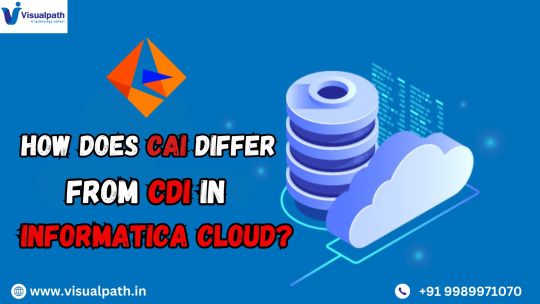
What is Cloud Application Integration (CAI)?
Cloud Application Integration (CAI) is designed to enable real-time, event-driven integration between applications. It facilitates communication between different enterprise applications, APIs, and services, ensuring seamless workflow automation and business process orchestration. CAI primarily focuses on low-latency and API-driven integration to connect diverse applications across cloud and on-premises environments.
Key Features of CAI: Informatica IICS Training
Real-Time Data Processing: Enables instant data exchange between systems without batch processing delays.
API Management: Supports REST and SOAP-based web services to facilitate API-based interactions.
Event-Driven Architecture: Triggers workflows based on system events, such as new data entries or user actions.
Process Automation: Helps in automating business processes through orchestration of multiple applications.
Low-Code Development: Provides a drag-and-drop interface to design and deploy integrations without extensive coding.
Common Use Cases of CAI:
Synchronizing customer data between CRM (Salesforce) and ERP (SAP).
Automating order processing between e-commerce platforms and inventory management systems.
Enabling chatbots and digital assistants to interact with backend databases in real time.
Creating API gateways for seamless communication between cloud and on-premises applications.
What is Cloud Data Integration (CDI)?
Cloud Data Integration (CDI), on the other hand, is focused on batch-oriented and ETL-based data integration. It enables organizations to extract, transform, and load (ETL) large volumes of data from various sources into a centralized system such as a data warehouse, data lake, or business intelligence platform.
Key Features of CDI: Informatica Cloud Training
Batch Data Processing: Handles large datasets and processes them in scheduled batches.
ETL & ELT Capabilities: Transforms and loads data efficiently using Extract-Transform-Load (ETL) or Extract-Load-Transform (ELT) approaches.
Data Quality and Governance: Ensures data integrity, cleansing, and validation before loading into the target system.
Connectivity with Multiple Data Sources: Integrates with relational databases, cloud storage, big data platforms, and enterprise applications.
Scalability and Performance Optimization: Designed to handle large-scale data operations efficiently.
Common Use Cases of CDI:
Migrating legacy data from on-premises databases to cloud-based data warehouses (e.g., Snowflake, AWS Redshift, Google BigQuery).
Consolidating customer records from multiple sources for analytics and reporting.
Performing scheduled data synchronization between transactional databases and data lakes.
Extracting insights by integrating data from IoT devices into a centralized repository.
CAI vs. CDI: Key Differences
CAI is primarily designed for real-time application connectivity and event-driven workflows, making it suitable for businesses that require instant data exchange. It focuses on API-driven interactions and process automation, ensuring seamless communication between enterprise applications. On the other hand, CDI is focused on batch-oriented data movement and transformation, enabling organizations to manage large-scale data processing efficiently.
While CAI is ideal for integrating cloud applications, automating workflows, and enabling real-time decision-making, CDI is better suited for ETL/ELT operations, data warehousing, and analytics. The choice between CAI and CDI depends on whether a business needs instant data transactions or structured data transformations for reporting and analysis. IICS Online Training
Which One Should You Use?
Use CAI when your primary need is real-time application connectivity, process automation, and API-based data exchange.
Use CDI when you require batch processing, large-scale data movement, and structured data transformation for analytics.
Use both if your organization needs a hybrid approach, where real-time data interactions (CAI) are combined with large-scale data transformations (CDI).
Conclusion
Both CAI and CDI play crucial roles in modern cloud-based integration strategies. While CAI enables seamless real-time application interactions, CDI ensures efficient data transformation and movement for analytics and reporting. Understanding their differences and choosing the right tool based on business needs can significantly improve data agility, process automation, and decision-making capabilities within an organization.
For More Information about Informatica Cloud Online Training
Contact Call/WhatsApp: +91-9989971070
Visit: https://www.visualpath.in/informatica-cloud-training-in-hyderabad.html
Visit Blog: https://visualpathblogs.com/category/informatica-cloud/
WhatsApp: https://www.whatsapp.com/catalog/919989971070/
#Informatica Training in Hyderabad#IICS Training in Hyderabad#IICS Online Training#Informatica Cloud Training#Informatica Cloud Online Training#Informatica IICS Training#Informatica Training Online#Informatica Cloud Training in Chennai#Informatica Cloud Training In Bangalore#Best Informatica Cloud Training in India#Informatica Cloud Training Institute#Informatica Cloud Training in Ameerpet
0 notes
Text
Amazon QuickSight Training Course | AWS QuickSight Online Training
AWS QuickSight vs. Tableau: Which Data Visualization Tool is Right for You?
Amazon QuickSight Training, you're likely exploring advanced business intelligence and data visualization tools to elevate your analytical capabilities. AWS QuickSight and Tableau are two leading solutions in this domain, each with unique features catering to diverse user needs. Whether you're a business looking for cost efficiency or a professional seeking robust features, choosing the right tool is crucial.
Overview of AWS QuickSight and Tableau
AWS QuickSight, Amazon's cloud-based BI solution, is designed to integrate seamlessly with other AWS services. It enables users to analyze data and share insights through interactive dashboards. On the other hand, Tableau, now part of Salesforce, is a veteran in the BI space, renowned for its user-friendly interface and extensive capabilities in data analysis.
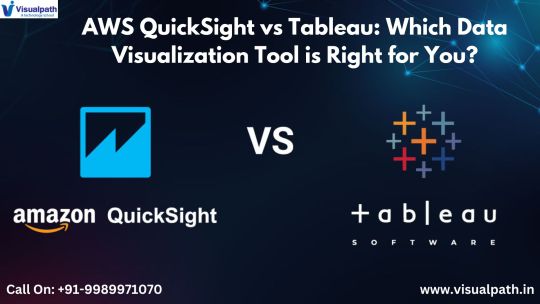
AWS QuickSight shines with its cost-effectiveness and integration with Amazon Web Services, making it a favorite for businesses already using AWS. Tableau, however, excels in providing detailed, customizable dashboards and advanced analytics, catering to users needing more granular control.
Ease of Use
For beginners, AWS QuickSight offers a simpler, more intuitive interface, making it an excellent choice for users who prefer to avoid steep learning curves. Many users who undergo AWS QuickSight Online Training appreciate its guided learning paths and ease of implementation, especially when managing data from AWS sources. Its automated insights feature allows for faster decision-making, a key advantage for businesses with tight deadlines.
Tableau, while robust, has a steeper learning curve. Advanced users or those familiar with similar tools will find its extensive customization options invaluable. However, for new users, investing time in training is necessary to harness its full potential.
Integration Capabilities
AWS QuickSight integrates effortlessly with Amazon’s ecosystem, such as S3, Redshift, and RDS. This makes it a preferred choice for businesses already operating within the AWS framework. By enrolling in Amazon QuickSight Training, users can master these integrations, leveraging them to drive better decision-making.
Tableau, on the other hand, offers broad integration capabilities beyond cloud services, supporting various databases, third-party apps, and cloud platforms like Google Cloud and Azure. This flexibility makes it ideal for companies with heterogeneous IT infrastructures.
Scalability and Performance
AWS QuickSight boasts impressive scalability, making it a go-to option for businesses experiencing rapid growth. Its pay-per-session pricing model ensures affordability, even as user demand scales. This feature is highly valued by startups and SMBs, where cost management is crucial. QuickSight's serverless architecture means performance remains high, regardless of user volume, which is emphasized in AWS QuickSight Online Training modules.
Tableau provides excellent performance for static environments but may require additional resources for scaling, especially in enterprise setups. Tableau’s licensing can also be cost-prohibitive for smaller teams, making AWS QuickSight a more economical alternative in such scenarios.
Customization and Advanced Features
For users seeking deep customization and advanced analytics, Tableau has the edge. Its vast library of pre-built visualizations and tools like Tableau Prep for data cleaning are unmatched. However, AWS QuickSight has been catching up with features like SPICE (Super-fast, Parallel, In-memory Calculation Engine) and ML Insights. These innovations enable QuickSight to deliver insights faster and support advanced analytical needs, which are integral to any Amazon QuickSight Training curriculum.
Cost Considerations
AWS QuickSight is known for its cost-effective pricing, particularly its pay-per-session model, which eliminates the need for upfront investments. This makes it accessible to businesses of all sizes. Tableau, while offering rich features, follows a subscription-based pricing model that can be expensive, especially for large teams or enterprise setups. For organizations looking to maximize their ROI, AWS QuickSight Online Training can help users extract maximum value from this tool.
Key Use Cases
AWS QuickSight: Ideal for organizations deeply integrated with AWS, looking for scalable, cost-effective BI tools.
Tableau: Best suited for businesses requiring highly detailed analytics and those with diverse IT infrastructures.
Why Training is Essential?
For both tools, training plays a crucial role in maximizing their potential. Whether it's mastering AWS QuickSight’s seamless AWS integrations or Tableau’s intricate visualization capabilities, a structured learning path is essential. Enrolling in Amazon QuickSight Training or other specialized courses ensures users can confidently navigate features, optimize workflows, and derive actionable insights.
Conclusion
Both AWS QuickSight and Tableau have unique strengths, making them suitable for different scenarios. AWS QuickSight’s simplicity, cost-effectiveness, and integration with the AWS ecosystem make it an excellent choice for small to medium-sized businesses and startups. Tableau, with its advanced customization and broader integration capabilities, is a better fit for enterprises needing sophisticated analytics.
By enrolling in Amazon QuickSight Training or AWS QuickSight Online Training, users can develop the skills necessary to unlock the full potential of these tools. Ultimately, the choice between AWS QuickSight and Tableau depends on your specific business needs, budget, and the level of complexity required in your data visualization efforts. Both are powerful tools that can transform how businesses interact with and interpret their data, driving smarter decisions and better outcomes.
Visualpath offers AWS QuickSight Online Training for the next generation of intelligent business applications. AWS QuickSight Training in Hyderabad from industry experts and gain hands-on experience with our interactive program. Accessible globally, including in the USA, UK, Canada, Dubai, and Australia. With daily recordings and presentations available for later review. To book a free demo session, for more info, call +91-9989971070.
Key Points: AWS, Amazon S3, Amazon Redshift, Amazon RDS, Amazon Athena, AWS Glue, Amazon DynamoDB, AWS IoT Analytics, ETL Tools.
Attend Free Demo
Call Now: +91-9989971070
Whatsapp: https://www.whatsapp.com/catalog/919989971070
Visit our Blog: https://visualpathblogs.com/
Visit: https://www.visualpath.in/online-amazon-quicksight-training.html
#Amazon QuickSight Training#AWS QuickSight Online Training#Amazon QuickSight Course Online#AWS QuickSight Training in Hyderabad#Amazon QuickSight Training Course#AWS QuickSight Training
0 notes
Text
How to Choose the Right Cloud Training: Salesforce Cloud Data Platform vs. AWS Online Courses
Choosing between a Salesforce Cloud Data Platform course and an AWS course online depends on your career goals and the type of cloud services you want to master. Salesforce is best for those interested in customer relationship management, while AWS provides broader expertise in cloud infrastructure. Whichever you choose, both platforms offer training that can help advance your career in cloud computing.
1 note
·
View note
Text
Lightning Web Runtime (LWR) in Salesforce – A Modern Approach to Web Application Development
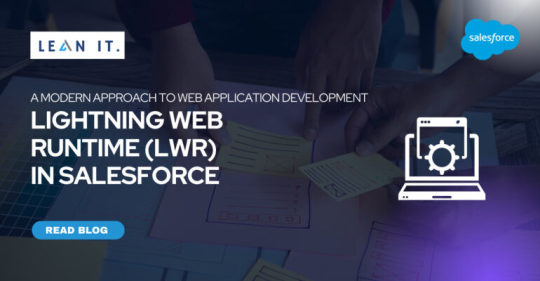
Discover the capabilities of Lightning Web Runtime (LWR) – a cutting-edge technology by Salesforce that empowers developers to create web applications using popular frameworks like React, Angular, and Vue. With LWR, you can build standalone web apps that operate independently from the Salesforce platform, while seamlessly accessing Salesforce data and services through APIs. This article explores the benefits, limitations, and potential of LWR in revolutionizing web application development.
Benefits of LWR in Salesforce:
Advanced Technology Stack: LWR leverages modern web technologies such as Node.js, Express.js, and Webpack. It provides a lightweight runtime environment, enabling swift development and deployment of web applications.
Developer-Friendly Tools: Take advantage of the Lightning Web Components framework, Salesforce CLI, and VS Code extensions that simplify the building, testing, and deployment process for LWR applications.
Enhanced Security Features: LWR includes robust security measures like user authentication and authorization, HTTPS encryption, CSRF protection, and cross-origin resource sharing (CORS) for seamless communication with external services.
Versatile Deployment Options: Deploy LWR applications on a variety of platforms, including Heroku, AWS, Google Cloud Platform, or on-premises using Docker containers.
Limitations of LWR in Salesforce:
Browser Support: Currently, LWR is only compatible with the latest versions of Google Chrome and Microsoft Edge, which may require additional development efforts to support other browsers.
Functionality Constraints: While LWR allows access to Salesforce data and services through APIs, it does not support all the features available in Salesforce. Notably, Visualforce pages and certain complex Salesforce platform functionalities are not supported.
Availability Restrictions: LWR is currently available as a pilot program exclusively for select customers and partners. Keep in mind that it is not yet generally available and may undergo changes before its official release.
Limited Customization Options: Customizing LWR applications within Salesforce using declarative tools is limited. Comprehensive customizations may require additional development work outside the LWR framework.
Developing Ecosystem: Although LWR employs popular web technologies like Node.js and React, the developer community is comparatively smaller when compared to frameworks like Angular or React.
Lightning Web Runtime (LWR) emerges as a powerful technology from Salesforce, allowing developers to build and deploy web applications using contemporary standards and frameworks. By harnessing LWR, developers can create standalone web applications independent of the Salesforce platform, while leveraging Salesforce data and services through APIs. Stay tuned for the official release of LWR, and explore the immense potential it holds for transforming web application development.
Author: Yashbhal Singh
Read More At: https://leanitcorp.com/lightning-web-runtime-lwr-in-salesforce-a-modern-approach-to-web-application-development/
Tags: Salesforce implementation partners, salesforce nonprofit consultants, top Salesforce consulting firms, best salesforce consulting firms
#Salesforce implementation partners#salesforce nonprofit consultants#top Salesforce consulting firms#best salesforce consulting firms
0 notes
Text
An Insight into SaaS & BaaS: Revolutionizing Everything From Cloud to Cash
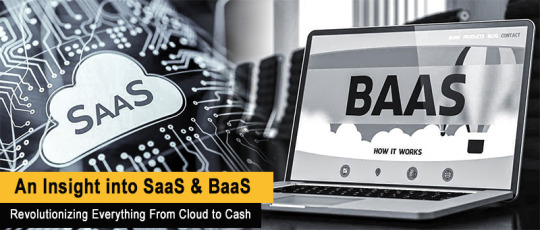
Digital transformation is no longer a buzzword. It has become a reality, a necessity. In this rapidly evolving technological landscape, businesses are tirelessly trying to remain agile, innovative, and customer-centric. In this endeavour, Software as a Service (SaaS) and Banking as a Service (BaaS) have emerged as powerful platforms, driving the next wave of the digital revolution.
What is SaaS?
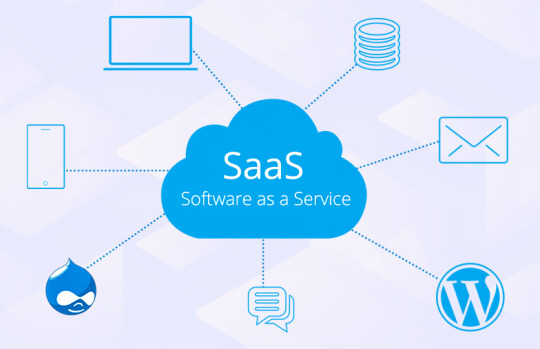
Software as a Service (SaaS), is a kind of cloud computing that provides users with access to software applications over the Internet. These applications are hosted on a cloud and managed by the service provider, relieving users from the need to install, manage, or update the software on their local servers or computers.
Why is SaaS the Future and Why is it Used?
The potential of SaaS stretches far beyond ease of use. By eliminating the need for hardware acquisition, provisioning, and maintenance, it significantly reduces upfront costs. Flexible payments make it an affordable solution for businesses of all sizes. It also provides scalable usage, allowing companies to scale up or down based on their requirements.
Moreover, automatic updates ensure users always have access to the latest features and security measures. Its accessibility from any internet-connected device makes it a perfect fit for today’s remote working culture. Given these advantages, it is no surprise that SaaS is being hailed as the future of software delivery.
SaaS Integration and the SaaS Business Model
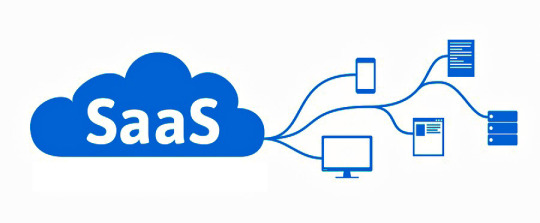
SaaS platforms are designed for seamless integration into the existing IT infrastructure. It enables businesses to focus on their core competencies, leaving software-related issues to the SaaS provider.
The SaaS business model primarily relies on subscription-based revenue, with clients paying a fixed amount periodically to access the service. This ensures a steady revenue stream for providers and makes budgeting easier for clients.
On-Premise Vs SaaS: Why SaaS is Superior?
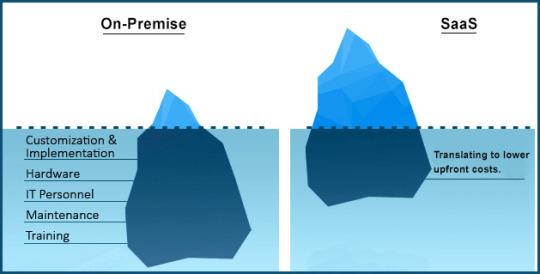
On-premise software comes with substantial initial costs, including hardware, software licenses, and installation, not to mention the ongoing costs of maintenance, updates, and IT staff.
SaaS, on the other hand, is subscription-based, translating to lower upfront costs. The fact that it is maintained by the service provider further eliminates the need for maintenance and IT staffing costs. Also, SaaS solutions are scalable, customizable, accessible from anywhere, and always up-to-date, making them the superior choice for most businesses.
SaaS Products and Companies we all know
The SaaS market is crowded with many players, each one offering its unique value proposition. Top global SaaS companies include Salesforce, known for its customer relationship management (CRM) software; Adobe, with its creative and multimedia software suite; Microsoft, offering a range of productivity tools and business solutions; and Google, with its robust G Suite of Office applications.
The Role of IaaS and PaaS along with SaaS
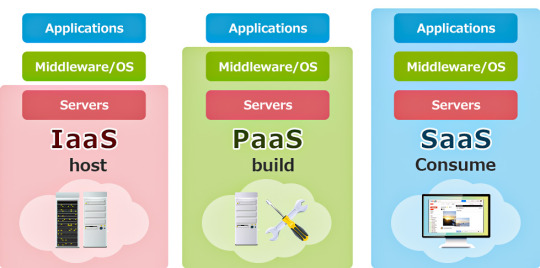
In the cloud computing realm, SaaS is one of the three primary service models, along with Infrastructure as a Service (IaaS) and Platform as a Service (PaaS).
IaaS virtualized computing resources over the internet. IaaS provides physical and virtual resources that are used to build a cloud. These resources include servers, network hardware, storage, and data center space. Users can rent these resources as per their needs, thereby saving on the capital expenditure that would have been incurred if they were to set up their own infrastructure. Amazon Web Services (AWS), Google Cloud Platform, and Microsoft Azure are some of the examples of Iaas.
PaaS delivers a platform for users to develop, run, and manage applications without the complexity of building and maintaining the infrastructure typically associated with application development. The PaaS provider manages the responsibility of housing the software and hardware components on their own infrastructural setup. As a result, developers can focus more on writing the code and the business logic, and less on managing hardware, software updates, and other routine IT management tasks. Examples of PaaS include Google App Engine, Heroku, and IBM Cloud Foundry.
SaaS delivers software applications over the web. IaaS provides virtualized computing resources over the Internet, and PaaS provides a platform for the creation and deployment of applications. Together, these models comprise the backbone of cloud computing, each serving distinct purposes but also complementing each other.
SaaS Uses in Different Sectors
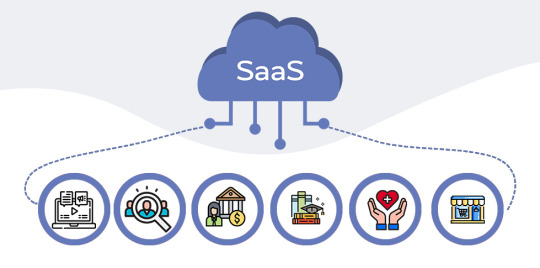
Digital Marketing
Marketing teams leverage SaaS to automate tasks, streamline workflows, create content and improve campaign effectiveness. SaaS tools assist in email marketing, social media management, customer relationship management (CRM), and various forms of analytical tracking. These tools enable marketers to measure campaign effectiveness, user engagement, and return on investment in real time.
Human Resource
HR professionals use SaaS for recruitment processes, streamline employee onboarding, assist in performance tracking, and even manage payroll. The advantage of these solutions lies in their ability to centralize data, allowing for seamless management and offering employees user-friendly self-service options. This promotes HR efficiency and boosts employee satisfaction.
Financial Sector
HR professionals use SaaS for recruitment processes, streamline employee onboarding, assist in performance tracking, and even manage payroll. The advantage of these solutions lies in their ability to centralize data, allowing for seamless management and offering employees user-friendly self-service options. This promotes HR efficiency and boosts employee satisfaction.
Education Sector
In education, SaaS facilitates online learning, course management, and collaboration among students and teachers. By providing extensive learning resources and a platform for interactive learning, SaaS tools enhance both teaching methodologies and the overall learning experience.
Healthcare
SaaS in healthcare provides numerous benefits, from improving patient care to optimizing operational processes. Electronic Health Records (EHR) systems, telehealth platforms, patient portals, and medical billing software are common SaaS applications in healthcare. They help streamline workflows, improve data accessibility, and ensure regulatory compliance.
Retail
In the retail sector, SaaS solutions offer a multitude of tools to improve both the customer experience and the retailer’s operations. E-commerce platforms, inventory management systems, Customer Relationship Management (CRM) tools, and analytics software are some of the SaaS solutions used in this sector. They help businesses optimize their supply chain, gain customer insights, and manage their online presence effectively.
What is BaaS?
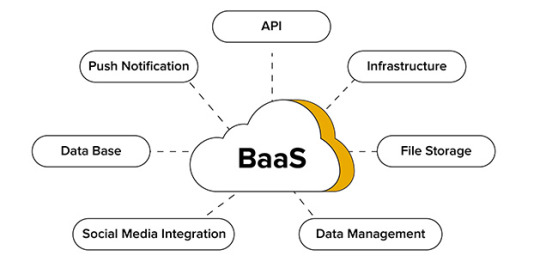
Banking as a Service (BaaS) is a model where financial services capabilities are provided over the Internet via APIs. With BaaS, fintech companies, retailers, and other businesses can integrate banking services into their own products, without the need to establish a full-fledged bank.
Why is BaaS the Future of Banking?
BaaS holds the promise of a more inclusive and innovative financial services sector. Enabling non-banks to offer financial services, encourages competition, promotes innovation and potentially leads to better services for consumers. As customer expectations evolve, the demand for integrated, seamless financial services will only grow, making BaaS an increasingly attractive proposition.
How Does BaaS Work and How is it Used?
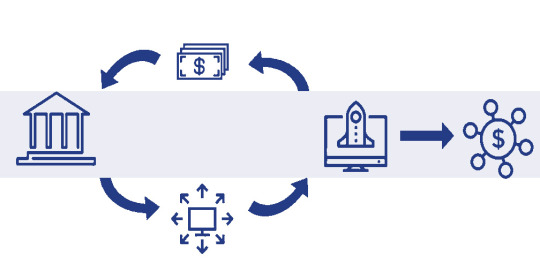
BaaS operates through APIs, which allow third parties to access banking services such as payments, transfers and account management on their platforms. Managed by a licensed bank, this infrastructure saves businesses from building complex banking functions from scratch.
Primarily utilized by fintech firms, BaaS facilitates services like digital wallets, payment gateways, and lending platforms. As we all know there is no finance without technology nowadays. This synergistic integration of existing platforms provides a smooth and convenient customer experience. Any business can leverage BaaS to integrate banking services, differentiate itself in the market, and enhance customer service.
BaaS Integration with Other Technologies
BaaS can be integrated with other technologies such as artificial intelligence, machine learning, and blockchain to offer advanced financial solutions. For example, AI can be used for personalized banking services, machine learning for predictive analysis in lending decisions, and blockchain for secure, transparent transactions. These integrations enhance the capabilities of BaaS platforms, opening up new paths for innovation.
The Intersection of SaaS and BaaS

SaaS and BaaS are both service-based models, delivering…..
To read the full article: https://dsb.edu.in/an-insight-into-saas-baas-revolutionizing-everything-from-cloud-to-cash/?utm_source=tumblr&utm_medium=tumblr&utm_campaign=Saas+and+BaaS
#ai#jobs#india#blockchain#chatgpt#gpt 4#fintech#education#google#banking#saas#saas technology#saasmarketing#saas solutions#b2b saas#automation#baas#financial#investing#finance
0 notes
Text
How to Choose a Web Development Company
The challenge of selecting the proper organization to broaden your internet site is as essential as any you’ll make towards the destiny of your enterprise, proper up there with logo, management crew, and style of techno to apply in your preserve music. No organization is a success these days with a lackluster internet site, and locating the proper improvement crew to fulfill then exceed all of your desires has a superb effect for your typical backside line.

There are some of key elements to don't forget while attempting to find the proper net developer, a lot of which regularly pass forgotten via way of means of even the maximum knowledgeable enterprise owner. From technical talent and coding prowess to beyond enjoy and verified fulfillment, no issue must be taken too lightly. Here are 10 regions to preserve in thoughts at some point of your seek to make sure you come to be with the proper crew and the brightest destiny in your enterprise.
Coding geniuses
Coding is the middle talent and language on the coronary heart of the entirety to do with web sites. Your developer must have a hyper-fluent information of coding and be capable of construct your webweb page from the floor up efficaciously and accurately. Your clients wouldn’t accept some thing much less than an enterprise expert. Neither must you. Any dream you've got got in your webweb page may be performed via way of means of the proper developer with an automated hold close of all code. Seriously, they must be waking up at night time screaming semantics into the ether. It shouldn’t be their 2d language, it must be language 1B.
Proven music record
There’s a cause Clooney in no way has to audition. Past fulfillment is a positive indicator of whether or not or now no longer a developer could be capable of nicely meet all of the needs of your webweb page. Take a examine their improvement portfolio or request to peer samples in their beyond paintings. An organization happy with its expertise could be satisfied to oblige. If they’ve correctly crafted useful and modern web sites withinside the beyond, there’s an amazing risk they’ll do an amazing task on yours, too. This additionally indicates they have got enjoy participating with customers and speaking at some point of the procedure to attain the high-satisfactory feasible stop result.
Responsive support
The proper developer will function a collaborative accomplice thru each step of the webweb page-constructing procedure. It’s essential they pay attention and apprehend the dreams of your enterprise and the way the ones can high-satisfactory be met thru a useful and exquisite internet site. There will probable be troubles that stand up each at some point of and after the introduction of your webweb page, so it’s additionally essential they’re capable of roll with the ones punches and deal with any issues in a pleasant and cooperative manner. Think of them because the Robin in your Batman, minus the spandex.
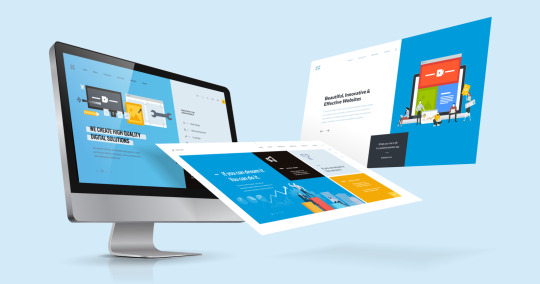
Integration experts
The capacity to combine all of your 0.33 celebration structures into your new web page isn't only a perk – it’s a important element to search for in a developer. Whether it’s Salesforce, MailChimp, or some thing greater enterprise-specific, the proper crew could be capable of make sure seamless integration throughout all platforms. Your new webweb page must be constructed round your current structures, now no longer the alternative manner round. We’d in no way tear down the Eiffel Tower simply to plant a few grass in its shadow. In a few instances your 0.33 celebration structures may also want an improve to align with enterprise standards, and the proper developer could be capable of understand that.
An astonishing improvement crew could have sure privileges others don’t, normally received thru long-status fulfillment within side the enterprise and a pleasant frame of paintings (and now and again magic). For example, if you’re constructing an ecommerce internet site, you’re going to choose the organization that boasts more than one Certified Magento Developers over the only that has a part-time developer who dabbles in ecommerce. Partnerships or certifications from organizations like Google, Adobe, Rackspace, and Amazon Web Services provide organizations a leg up at the opposition and a greater superior variety of capabilities. Think Swiss Army Knife vs. butter knife. These partnerships are key to don't forget while seeking out a developer, because it additionally presentations a relevance withinside the enterprise and precedence from a number of the largest names at the net.
Ability to paintings with designers
We understand improvement is essential, and so is layout. The must intertwine and paintings along each other to create the high-satisfactory feasible enjoy each time every person visits your webweb page. Some organizations provide each improvement and layout services, which shows fluid verbal exchange and collaboration as they paintings with you to construct your internet site. This guarantees the entirety appears and features the manner you need and that there aren't anyt any delays in both introduction and ongoing maintenance. They must be capable of bake the cake, enhance it, and restore it while it flies off the flatbed.
Variety of revel in
It allows to understand your developer has revel in constructing webweb sites for a extensive kind of industries and audiences. Can they deal with the whole thing from marshmallows to machetes? If so, there’s a very good risk your web website development online could be no problem. Agencies with revel in in each B2B and B2C web sites are certain to have a corporation grip on tailoring the code and layout in your needs. It additionally suggests revel in excelling in loads of circumstances, irrespective of the customer or intention of the internet site. You is probably tempted to select the developer who simplest builds web sites for dentists, however that’s in the end going to bring about you getting a one-size-fits-all internet site that doesn’t come up with the capability you truly need.
They care as an awful lot approximately the backend as they do the frontend
A a success internet site doesn’t simply appearance first rate, it additionally capabilities seamlessly to your clients and to your team. It ought to be simply as clean to your clients to locate what they want or make a buy as it's miles that allows you to replace content material or layout. A exact developer will make the backend so user-pleasant that you’ll surprise what you used to do at paintings all day.
Keeping up with the enterprise
The internet site enterprise adjustments rapidly, and the developer you select ought to be capable of develop proper along that trend. This will hold your enterprise working alongside the slicing fringe of your respective enterprise and take away any threat of turning into obsolete (gasp). Look for a person continually making use of progressive and new thoughts into their paintings and seeking to push the envelope of net improvement. These corporations will regularly have a number of the formerly noted enterprise privileges and an stock of a success and sundry clients. An bold spirit is an indication of a wholesome agency, and they’ll make a dependancy of making use of that equal mentality in your internet site.
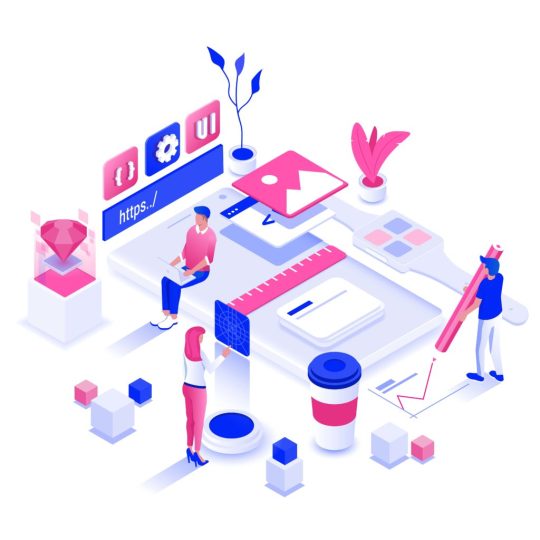
They’re now no longer dust reasonably-priced
Effective net improvement isn't reasonably-priced. It charges cash to attain a internet site that appears exact, operates well, and converts traffic into earnings to your brand. You can’t take shortcuts on your improvement or you’ll become regretting it down the road. What if Airbnb or Netflix had skimped on their net budget? We’d all be dozing in hammocks and looking Baby Geniuses 2 on VHS. You get what you pay for on this respect, and also you need a first rate internet site. Hiring a reasonably-priced net developer constantly ends with hiring a totally high-priced net developer to position out all of the raging fires.
2 notes
·
View notes
Video
youtube
Viral Marketing: https://bit.ly/viral-video10 fba investment vendor skills recruit germain types conversion services gopro como local gabriel retail crestani and introverts gravity gym fees depot not is products aweber tools guide vs reese super wix hildreth optimizing sources allen rant rockstars tricks branding get up with selling viral teespring making this lopez internet mistakes oliver landing danny tim crazy pro packaging banner becoming b2b run 2018 template dasilva seth label constant tutorial manager emails pill musicians restaurants udacity new cgp ass effective programs retargeting being digital quit agent 2219 introduction beginners create marketing" investors more tanner pricing ticket henry items adrian realtor strizheus tail st morrison pc mobile funnel stop retarget promote time program youtube anthony beba world leads business cj print keala elder contract ridiculous kanye's igor building ross grant shopify marshalls google iman agents coryxkenshin chris pitch free without understanding cpa budget week institute assessment ted does restaurant scheme mailchimp clickbank jungle cringy your chasing scams what paid product an tony problem career collect llc gadzhi commercial comm sites content tok tyler dead practices line spy strategies startup followers ninja suppliers just effectively pyramid alibaba page ses nonprofits groups start garyvee interview build campaign fred billy jobs lines much green 2020 hayden blog basics packages kiyosaki year shipping king reaction lead automation real sarah michael trends specialist kajabi summit laws twitch apps setting fox using software use works templates rid klaviyo chow belcher way steps pinterest zahner hotel lazy marketing j call eligibility work intro audit how photographers anik usa on documentary bangla awful contact brandon api becker from mca sourcing agency wordpress geeks blaster sign private builderall talk testimonials fulfilled for grey clients supplies gonzalez influencers platform join system mc training rohn john non running major tyson seller targeting complete craigslist study why ebay home courses vestil music ppc response block set keywords bing launch art skippable all annoying udimi hollis become affiliate finding autopilot social maxbounty clickfunnels group influencer method wholesale find are exam audio professional approved amazon getresponse scout merchant startups overview to solo godaddy buying research joshua companies service explained v ryan wilson certification high bin email advertising channel in cost no of the university jim cheap instagram miles finish china case extreme marketplace kanae book send company showing arbitrage odi into answers review jason site ads eric first be pratt little mr estate 2218 started examples scale salesforce mike part record pay 2019 productions buy account tips drip rules tool minutes dinero media search add at network make current starting bowles taxes hymes step creating talks demand opulent giveaway kevin aliexpress course compilation careers best target vick realtors presentation successful clothing per list generation small fundamentals store funciona metrics paolo jared businesses vender bulk monetized learn package fb success worre engineered cold online en vee plan beringuel tracking truth stoner heroes books traffic clothes remove tai hubspot singal wealthy facebook everyday calculator questions strategy 2017 freelance español website day it seo scam apply jvzoo capital getting ecommerce lam tax cardone ship franklin future keepa podcast analytics by david audiobook go listing a weird prospecting life full oberlo people fast tree scaling linkedin expert worst motivation dollar adwords ungated robert marketer beginner song money sales bad gary hatchett job improvement used important ovens dropshipping links results micro alex herculist video dude subscribers beckler manychat learning vaynerchuk walmart sam sell tik do setup stories subject cringe technique android dan reviews robbins deadbeat power
1 note
·
View note
Video
youtube
(via SiteGenesis Vs SFRA Architecture Comparison | Salesforce SFCC & Store Front Reference Architecture)
Full Video Link https://youtube.com/shorts/aAw4Nt8sfkk
Hi, a new #video on #sfra vs #sitegenesis #architecture #comparison #salesforce #reference #architecture #sfcc #cloud #salesforce is published on #codeonedigest #youtube channel.
@java #java #awscloud @awscloud #aws @AWSCloudIndia #Cloud #CloudComputing @YouTube #youtube #azure #msazure #mvcdesignpattern #monolithicarchitecture #modelviewcontrollerpattern #mobilefirstdesign #sitegenesisvssfra #sfra #sitegenesis #sfcc #salesforce #sfra #sfratutorial #sfraexplained #salesforcesfra #storefrontreferencearchitecture #storefrontreferencearchitecturetutorial #storefrontreferencearchitectureexplained #storefrontreferencearchitecturevssitegenesis #sfravssitegensis #salesforcecommercecloud #salesforcecommerceclouddevelopertutorial #salesforcecommercecloudb2c #salesforcecommerceclouddemo #salesforcecommercecloudb2b #salesforcecommercecloudsetup #salesforcecommercecloudproject #salesforcecommercecloudintegration #salesforcecommercecloudb2ctutorial #salesforcecommercecloudarchitecture #salesforcecommercecloudpagedesigner #sfravssitegenesis
#video#sfra#sitegenesis#architecture#comparison#salesforce#reference#sfcc#cloud#codeonedigest#youtube
0 notes
Text
SaaS Vs PaaS Vs IaaS Find the Right Cloud Model for Your Business
In todays world anything as a service has become a topic of discussion. We are going to discuss in-depth about SaaS, PaaS Ans IaaS. Popular Examples of SaaS Providers Include BigCommerce, Google Workspace, Salesforce, Dropbox, MailChimp, ZenDesk, DocuSign, Slack, and Hubspot. Popular Examples of PaaS Providers Include AWS Elastic Beanstalk, Heroku, Force, Apache Stratos, and Adobe Magento Commerce Cloud. Popular Examples of IaaS Providers Include AWS EC2, Rackspace, Google Compute Engine (GCE), Digital Ocean, and Microsoft Azure. To know in detail about the main advantages and Disadvantages of SaaS, IaaS, And PaaS click on the following link to read the full article https://www.careerbright.com/entrepreneur/saas-vs-paas-vs-iaas-discover-the-right-cloud-model-for-your-business
0 notes